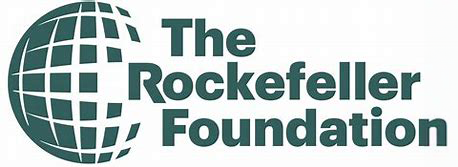Discover tools, publications, and opportunities to support public health initiatives.
Incorporated more than a century ago, the Rockefeller Foundation (RF) established health cooperation as a legitimate intergovernmental and private agency endeavor, and shaped the principles, practices, and key institutions of the international health field.
The RF was established in 1913 by Standard Oil magnate John D Rockefeller “to promote the well-being of mankind throughout the world”. His efforts were part of a new American movement of “scientific philanthropy”, launched by Scottish-born steel mogul Andrew Carnegie in his 1889 essay “The Gospel of Wealth”.
Rockefeller built upon Carnegie’s ideas, expanding from initial hospital, church, and university donations to cover public education, medical, and scientific spheres. Public health became the ideal vehicle through which Rockefeller philanthropy could apply scientific findings to the public good.

It is worth remembering that more than 100 years ago, Rockefeller Foundation spearheaded the public health science for several reasons that included:
1. Rapid industrialization and urbanization that led to overcrowding, poor sanitation, and increased
disease transmission,
2. High mortality rates among children and young adults,
3. Economic burden due to illnesses and diseases among individuals, families, and communities,
4. Social justice aiming at addressing health disparities,
5. Scientific advancements that offered opportunities for disease prevention and control, and
6. Philanthropic mission to promote “the wellbeing of mankind”.
In the 21st century, most of these public health-related challenges still prevail in underserved areas in the Global North (Inner City Areas and Rural Areas) and in the Global South (Shantytowns and Rural Areas).
Indeed, what GAPCI plans to do aligns with the requirement of the Association of Schools and Programs of Public Health (ASPPH) to establish a Department of Public Health Practice (almost 100 years after public health science was initiated) in order to ensure that their programs are responsive to community needs, prepare students for real-world challenges, and advance the field of public health through research and practice, as per a conversation that Dr Gasana had with the late ASPPH President and CEO, Dr Harrison Spencer. He visited Florida International University when they were planning the establishment of the Robert Stempel School of Public Health in early 2000s.
Indeed, Dr Spencer said that public health researchers did not go in the community (So-called “the ivory tower mentality”) as they were satisfied with the data that has been collected by agencies and a few daring community- based researchers and going in the community ran the risk of not getting tenure (within the usual 5-year window period) as it takes years to get publications from the community-based research.
Underserved Population of workers
These are informal sector workers, migrant workers (legal and non-legal), and others.
In the Global North
In the Global South
1) Rural Areas
2) Urban Areas
3) Inner City Areas
1) Remote Areas
2) Shanty Towns
GAPCI aims to secure $21M to establish a global hybrid university and integrated school of medicine and public health through fundraising and grant writing.
GAPCI requires robust infrastructure and partnerships to address public health challenges in underserved populations using primordial prevention.
GAPCI will use hybrid Information Communication Technologies (ICT) and e-learning to train and collaborate globally on primordial prevention.
GAPCI plans to build a complex in South Florida featuring a hotel, gym, swimming pool, and auditoriums for ICT, programs, and conferences.
GAPCI staff includes an executive director, program managers, health educators, and community and workplace outreach workers.
GAPCI will collaborate with international organizations, academic institutions, and non-government organizations through a number of linkages worldwide.
Train and empower, health and professionals, community health (CHWs), and workplace health and safety workers (WHSWs) in underserved populations to deliver prevention programs.
Adopt the Total Worker Health (TWH) approach, emphasizing worker well-being, safety, and health promotion in workplace settings.
GAPCI will train, mentor, and provide resources to community health workers (CHWs) and workplace health and safety workers (WHSWs) to enhance their skills and effectiveness in prevention, education, and research. It will establish regional hubs and partners in both the Global North and South to implement tailored prevention programs. Conducting research and evaluations will inform program development, monitor progress, and advocate for policy changes. To ensure long-term sustainability, GAPCI will secure funding, develop strategic plans, and establish a strong organizational structure. Additionally, GAPCI will advocate for policies and programs supporting Health & Safety For All, primordial prevention, and community engagement at all levels.
Sign up and our newsletter to keep up with the latest events regarding GAPCI and our initiatives.

The Global Applied Prevention Center Inc (GAPCI) partners with governments, academia, and community organisations to promote public health and safety.